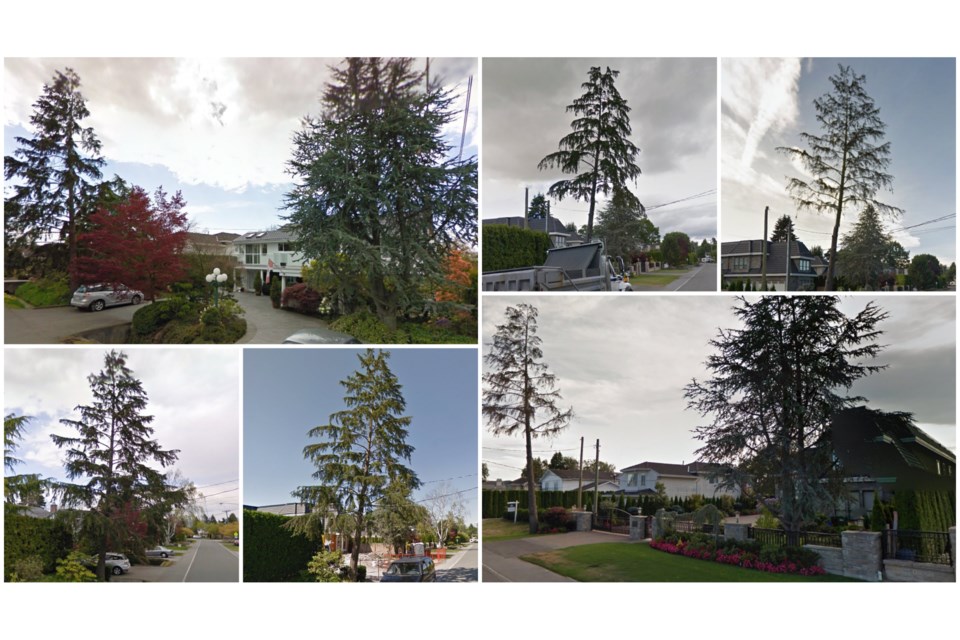Trees have been hitting the headlines. Most recently, in February, the national papers assured us that 85 per cent of B.C.’s Great Bear Rainforest would, henceforth, be protected from industrial logging.
But locally, the tree news is almost always bad news. Many Richmond residents continue to bemoan the fact that healthy, mature trees are being sacrificed at an alarming rate to accomodate construction projects that aren’t invariably welcome.
I’m fortunate because my neighbourhood is still dotted with big trees, though I fear there’ll soon be more big houses than big trees. Sadly, a couple of the trees planted by my parents behind the house have had to go because they’d become a hazard — they’d been topped before the bylaw came into effect and were rotting. However, their removal has made me look with even greater fondness and interest at the ones still present — a hawthorn, rowan, beech and linden. In fact, I now consider myself their guardian.
Trees, besides being essential for the health of our natural environment (and beneficial to human psychological development, as Jane Goodall observed about greenery in general), have played a vital role in our civilization’s social history. I knew about this in a vague way, but a story I recently read sparked my curiosity and drove me to investigate.
The etymology of tree is related to that of the word true, both traceable to a Proto-Indo-European source that meant to be firm, steadfast. Was it a tree’s towering height and impressive solidity, sometimes combined with a great age (oak and olive trees can live up to 2,000 years) that led people to associate them with qualities such as faithfulness, uprightness and honesty?
For instance, the oak has long been a symbol of strength and steadfastness, widely used in heraldry. We have a few magnificent oaks in Minoru Park, whose canopies shelter us at the northwest corner of the park. But the grandest oaks I’ve ever seen are the five along No.2 Road, between Granville Avenue and Garrison Road, monumental specimens deserving to be revered.
When my parents planted a linden tree in the front yard, they were paying homage to the pair of ancient lindens flanking our house in Germany. Their massive roots were my enchanted armchair when I was a child, and their flowers have been sipped by hundreds of generations of bees. The linden’s soft wood (also called lime wood) was traditionally favoured by Renaissance German woodcarvers (the most famous of whom is Tilman Riemenschneider) for their breathtaking religious sculptures.
In medieval England, hawthorns often marked the place where people assembled for debate on public issues. Such assemblies were called moots; we still use the phrase moot point for a subject to dispute. My backyard hawthorn is an assembly hall for small birds, including Anna’s hummingbirds. To judge by the sounds issuing from the hawthorn, their moot points are unending. But I bet there’ll be one point on which all agree — the senseless destruction of trees must cease.



